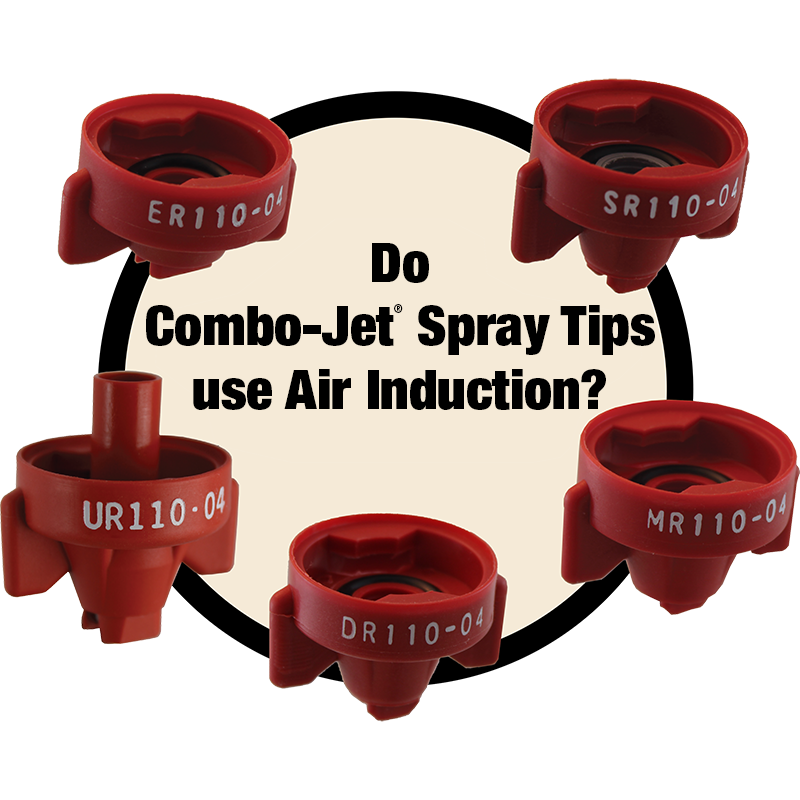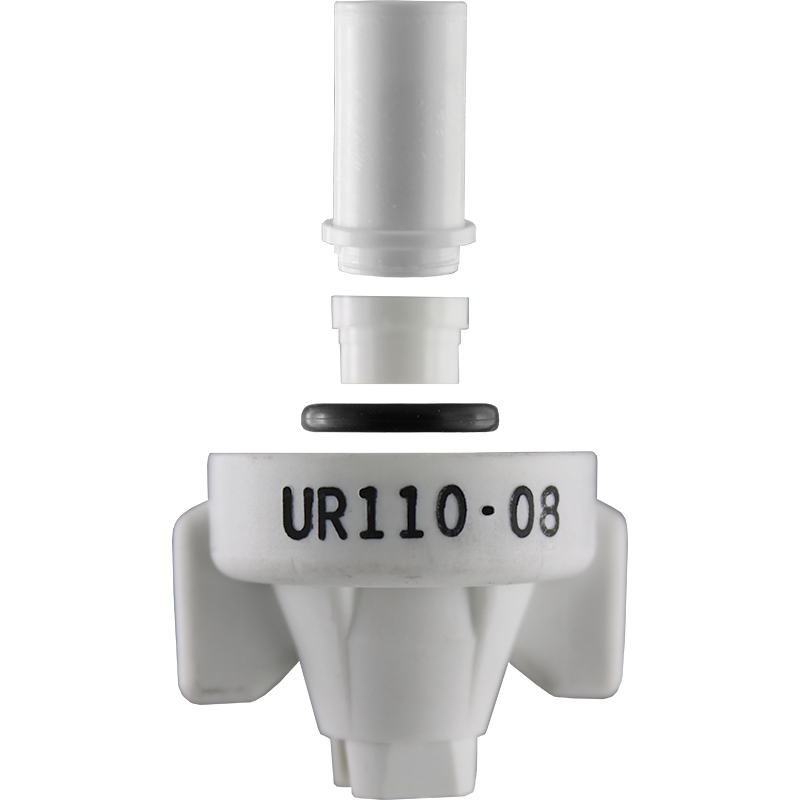
Do Combo-Jet Drift Reduction Spray Tips Use Air Induction?
Nope. Simple as that. Well, not that simple, as Combo-Jet® drift reduction spray tips can provide many levels of drift control that can even exceed the drift reduction capabilities of air induction spray tips available today. Even on top of that, they are completely compatible with pulse width modulation (PWM) spray systems used today.
While, the introduction of air into the spray stream (typically within the spray tip-cap) is one way to make overall larger droplets, it isn’t the only technology that can do so.
Combo-Jet® spray tips use a single (and dual) closed chamber drift reduction design. Through precision engineered pre-orifices, four stages of drift reduction spray tips series are offered today. They (SR/MR/DR/UR series) vary in the both in the coverage and drift reduction they provide.
Notably, depending on the size of tip, the SR series can typically provide a finer coverage than air induction tips can provide, still with significant reduction in driftable fines. (For those applications like glufosinate that require medium coverage, but can drift sensitive applications.)
[right] The picture of the UR110-08 shows an exploded view of the tips’ patent pending design. The dual chamber drift reduction design uses two pre-orifices to create turbulence chambers to interact with the spray as it travels through the tip to make ultimate low levels of drift. It is recommended for use and has been engineered for new dicamba herbicide formulations for Dicamba-tolerant crop applications.






